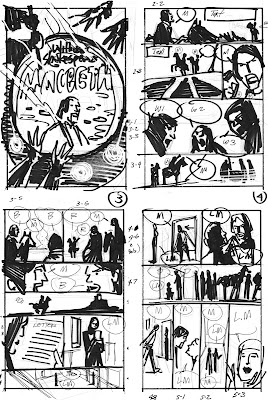These jobs required a lot more preparation than the normal work.When you're doing period pieces, you have to be extremely accurate with costumes and settings. Their are a thousand little details you have to deal with.
On Macbeth not only did I have the advantage of working on a Shakespeare play, but I also have an excellent sci-fi writer, the late Suzette Haden Elgin. The biggest problem for both of us was reducing a five act play to sixteen pages of comic book material.
I also "cast" the actors. I used photo reference of Sean Connery for the lead, and Greta Garbo as his wife. Wherever possible, I also tracked down photo reference for the rest of the players.
The second step was to break the script down into a series of pictures that quickly and concisely moved the story along. As the compositions are worked out to best show the action, the placement of the captions and dialogue balloons are part of the process.
With penciling I make use of my character sketches, thumbnail drawings and whatever reference I have gathered. At this point most of the thinking problems have been solved and you're just slaving over the hard work of producing crisp and lively drawings. Normally, for comic books I was using the standard 10" x 15" paper size but with this story I was using 14" x 19" with the full page bleeds.
Next week: Ink the pencils and doing color roughs.













































